The Skills of the Preliterate Proto-Egyptians

To get true information about their spirituality, you have to look at Egypt much differently; you have to look at it through the eyes of muthos. Only then do all the dominoes fall into place.
Among those dominoes is my contention that after the Sphinx’s face was carved in 6000 B.C., the remaining portions of the Sphinx were carved in six (6) subsequent phases over a 3500 year period, with the last phase (the rump and tail) being carved in Dynastic times, around 2550 B.C.



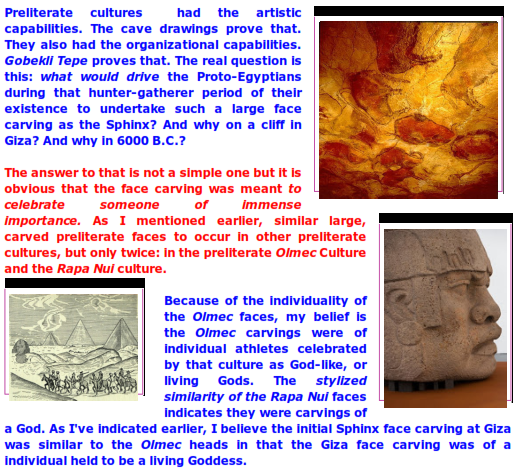
Let me suggest a few things about the scale of that initial face carving, and the effort required to do it. The Giza Sphinx, as we know it today, does not sit on top of the original Giza Plateau, only its head and the very top of its back project above the general elevation of the surrounding plateau. This means that the body, for most of its existence, has been covered by desert sands., as it was excavated out of the plateau.
At one time, the Giza plateau contained no monuments, no Sphinx, no pyramids, nothing. The picture (above, L) shows how the Giza plateau would have looked (if the observer were facing west from the Nile) after the Sphinx and pyramids were built. The head of the Sphinx is above the general slope of the plateau which is covered in sand, as it was most of the time after 6000 B.C., and all of the time after 3000 B.C. until modern times, as the area was a desert.
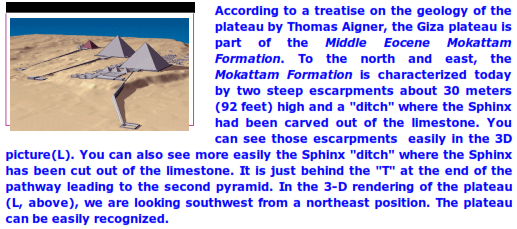
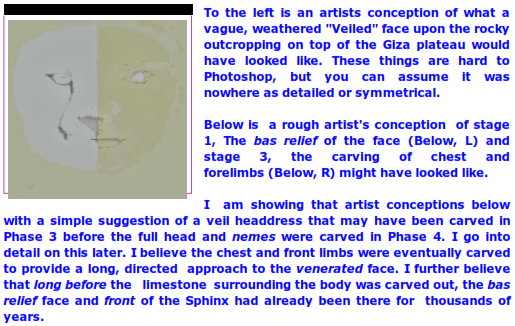
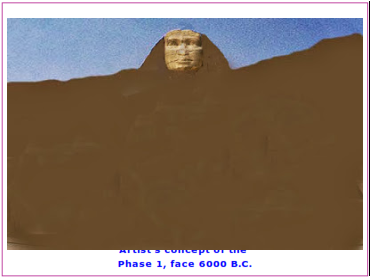
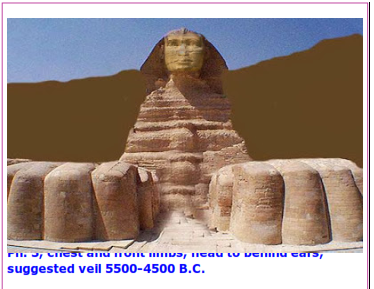

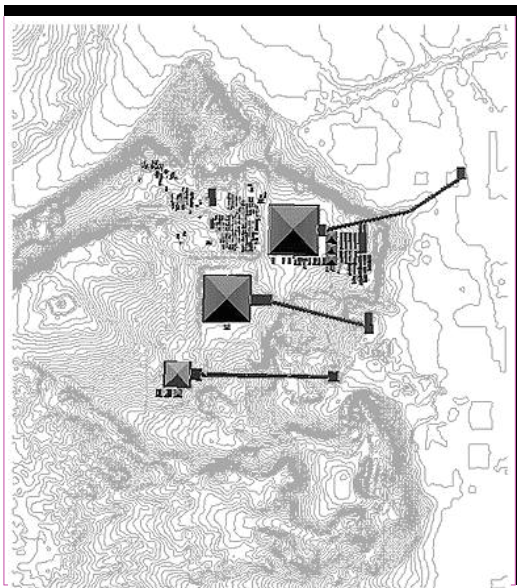
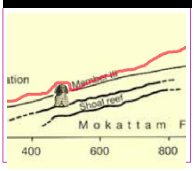

As can be seen by the red line in the schematic (above, L) and the drawing of the Spinx's limestone levels (above, R), there is an abundance of hard limestone (member III) to either side of the face and slightly below it. The red line indicates my estimate of the original level of the plateau. You can get a better conception of what the early Sphinx bas relief face looked like c. 6000 B.C. in relation to the rocky outcropping if we think of it as being like one of the faces of Mt Rushmore, say Roosevelt's head.

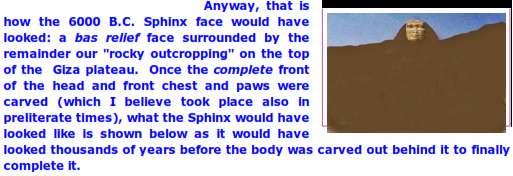
Note: I have colored the surrounding rock brown so that you can see clearly what was carved in phases 1-3. Also note that the top of the head was is relatively flat, one of the peculiar aspects of the sphinx head, as human heads rise to slight dome. As we shall see, the top of the cheetah's head is also flat.
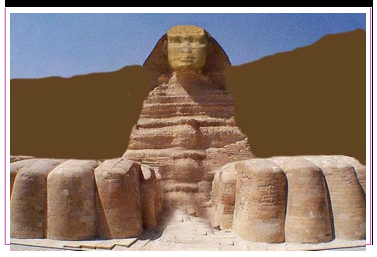
At any rate, Phases 1-3 of the Sphinx would have provided an absolutely stupendous sight for preliterate pilgrims.This rendering will also give you some idea why I believe the limbs and chest would probably have been carved relatively soon after the face: the limbs provided a passageway to approach the venerated face. The passage between the limbs would have probably been covered with hides to make the approach dark, opening up just before the chest to reveal the face high above. Remember, approaching the Sphinx was spiritual, not sightseeing.



















